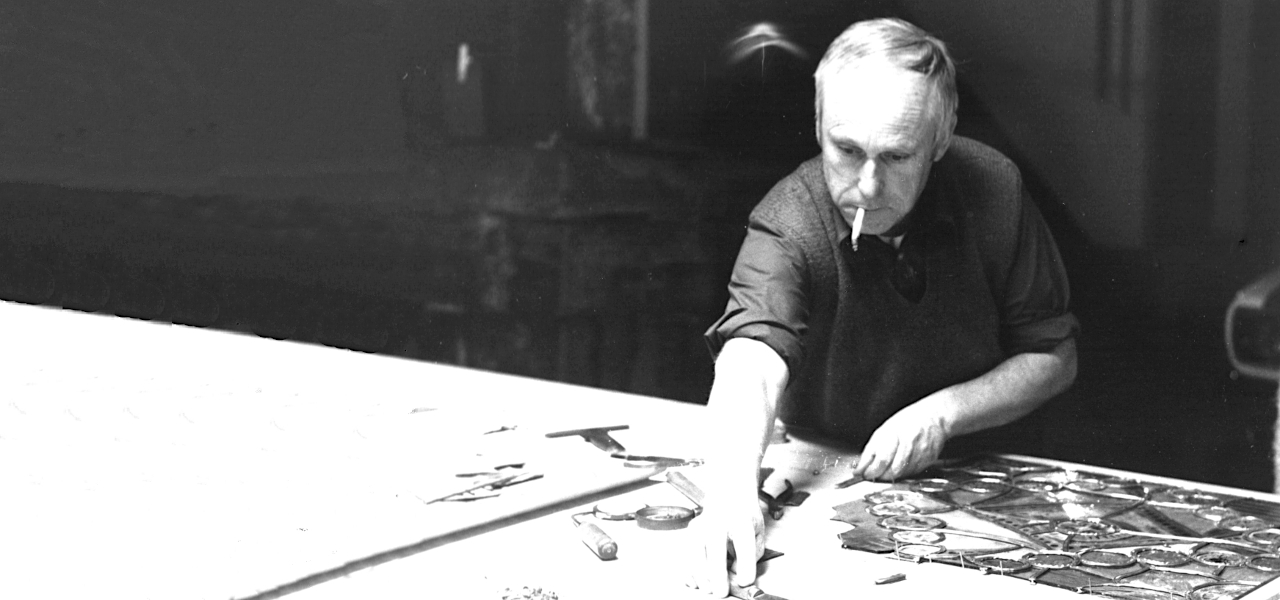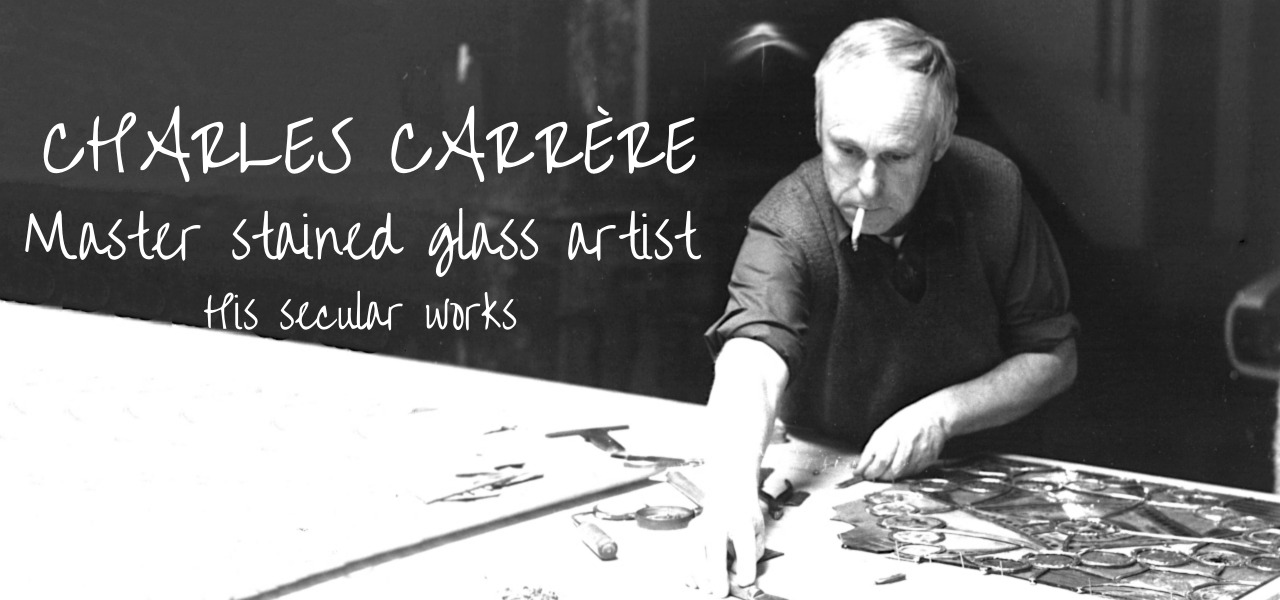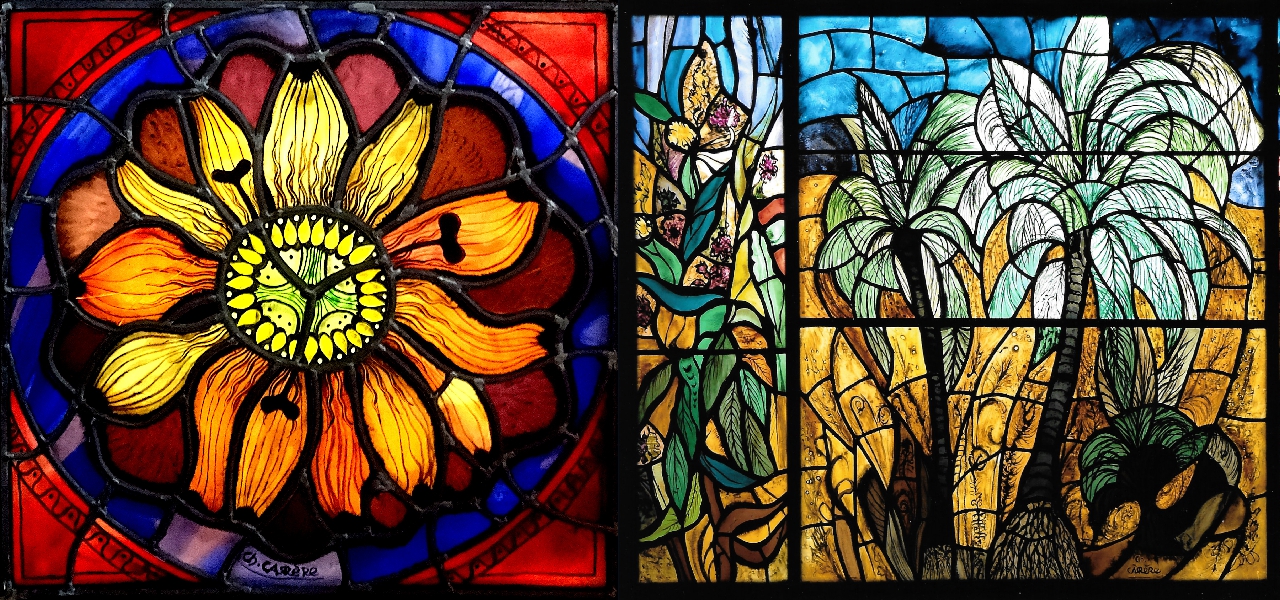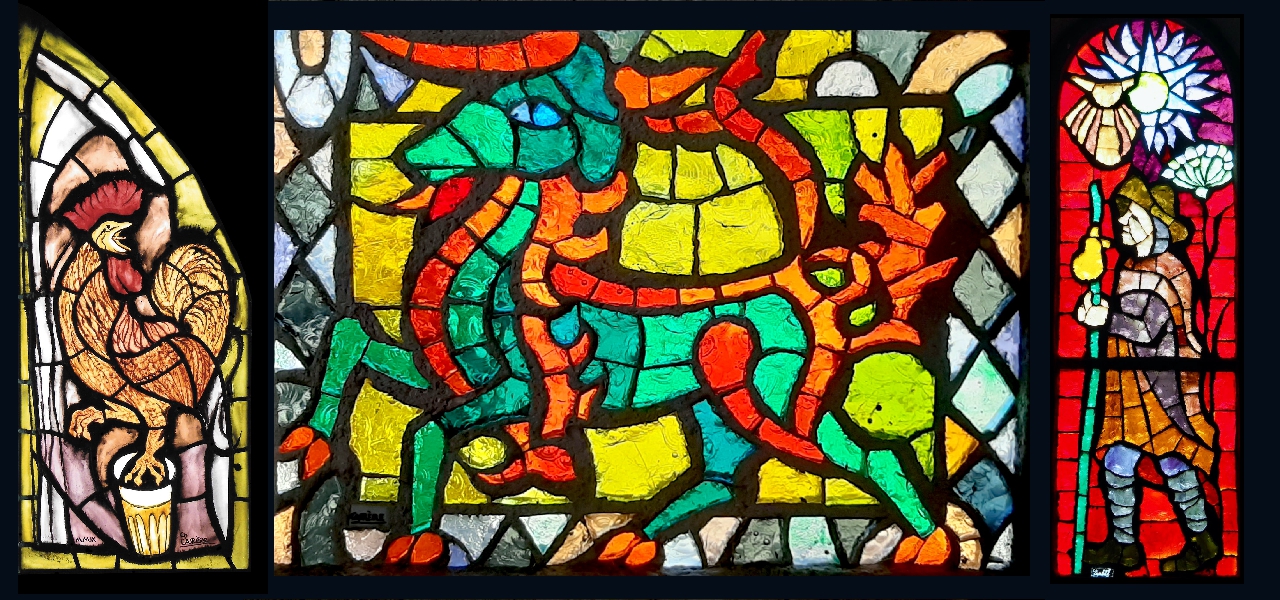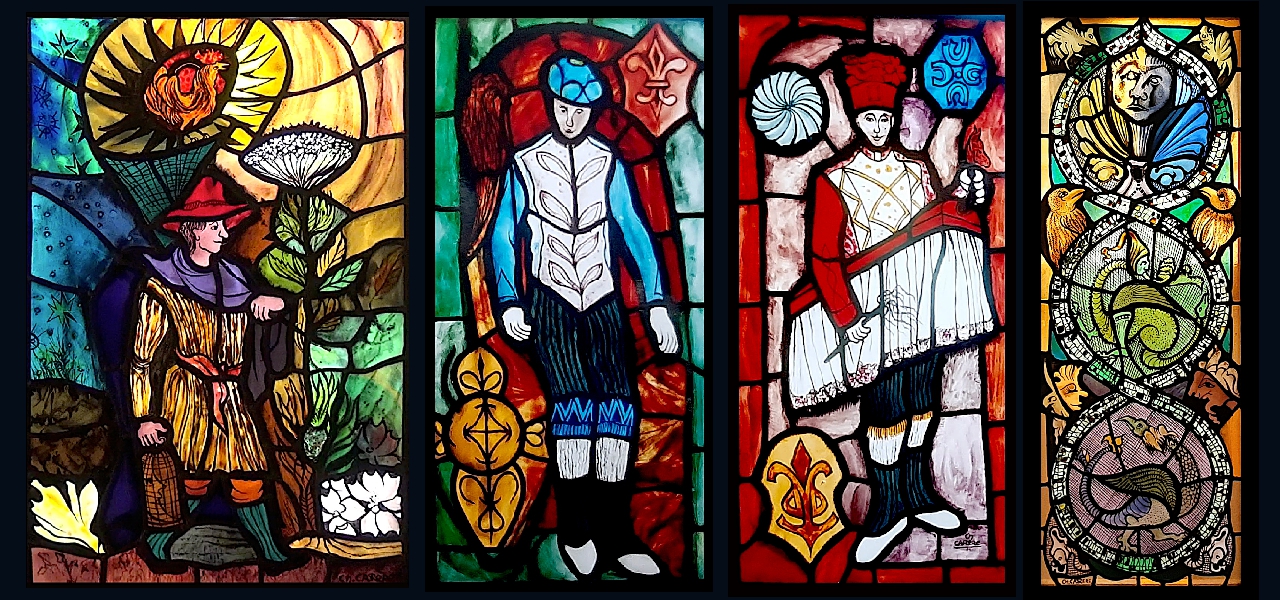The Master stained glass artist likes to play with transparency and let in coloured light to create a warm atmosphere in homes.
When Charles Carrère decorates the window of a house he explains that not only does it conceal the interior of the house from passers-by but it also allows the light to do its changing work in the corridor according to the seasons and the hours.
Sometimes, to dress up a stained glass window and give it a unique appearance, he installs a stained glass window at the top like a band. The stained glass windows on the doors between the living rooms and the corridor allow the light to pass through the door and the passageway is thus drenched in colour without revealing the contents of the room which it protects from prying eyes.
Charles Carrère also creates stained glass windows to be integrated into furniture, but this is a rather secondary activity.
Creation of stained glass windows for his private home
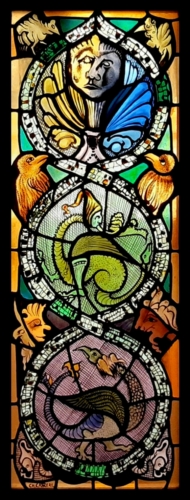
This stained glass window is on the first floor of Charles Carrère’s home, in his artist’s studio. It embodies the Master stained glass artist’s passion for the medieval period. Here it is a personal interpretation. The inspiration comes from the strange animals that can be seen on the archivolts of certain church tympanums. Dragons, amphibians, basilisks, griffins, cyclops, all sorts of scary beasts, some of which eat themselves… This stained glass window will be the subject of an article in a Focus
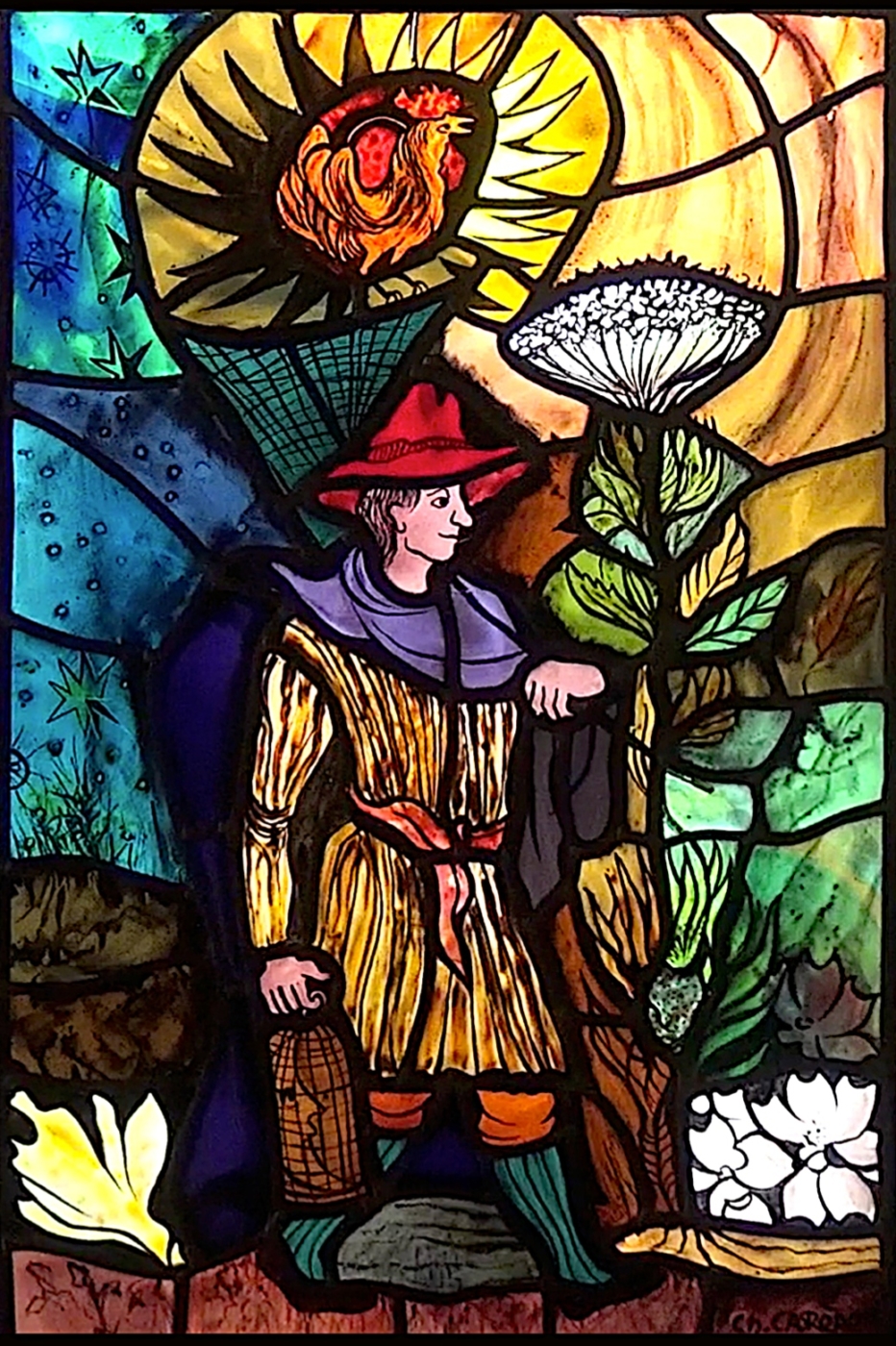
This stained glass window is an exact copy of a stained glass window made for a client and which can be found in Charles Carrère’s studio. Sometimes, the Master stained glass artist who has difficulty in parting with a work reproduces it for himself.
The subject of this stained glass window is the morning worker. And it looks as if it could be read as poetry. It’s a bit like Saint Exupéry’s Little Prince with his lamplighter. The morning worker collects the darkness with his net, he puts the moon in a cage, he makes the roosters sing, he makes the sun rise and he opens the flowers.
This stained glass window will be the subject of an article in a future Focus.
Creations for its clients
When he received a commission for a particular residence and if he had carte blanche as to the subject of the work to be produced, Charles Carrère liked to propose themes with references to Art: music, literature, poetry, sculpture, painting etc.
Some clients had a clear idea of what they wanted. The fables of Jean de La Fontaine were a great source of inspiration for these compositions created for a private residence in Saint Jean de Luz.
The fable “The Lion and the Rat” is recognisable on the left, “The Turtle and the Two Ducks” in the centre and “The Cicada and the Ant” on the right.
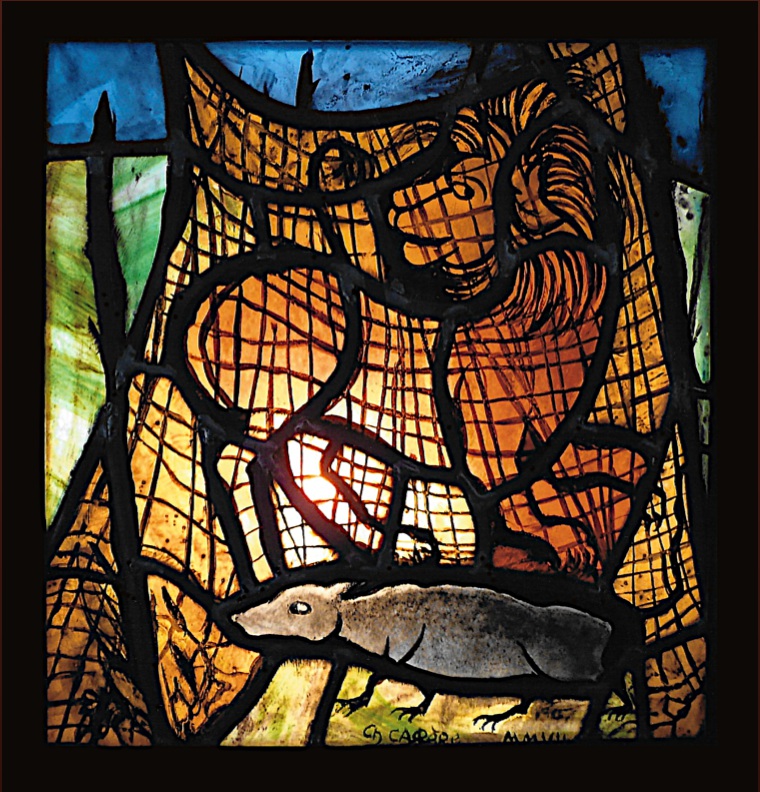
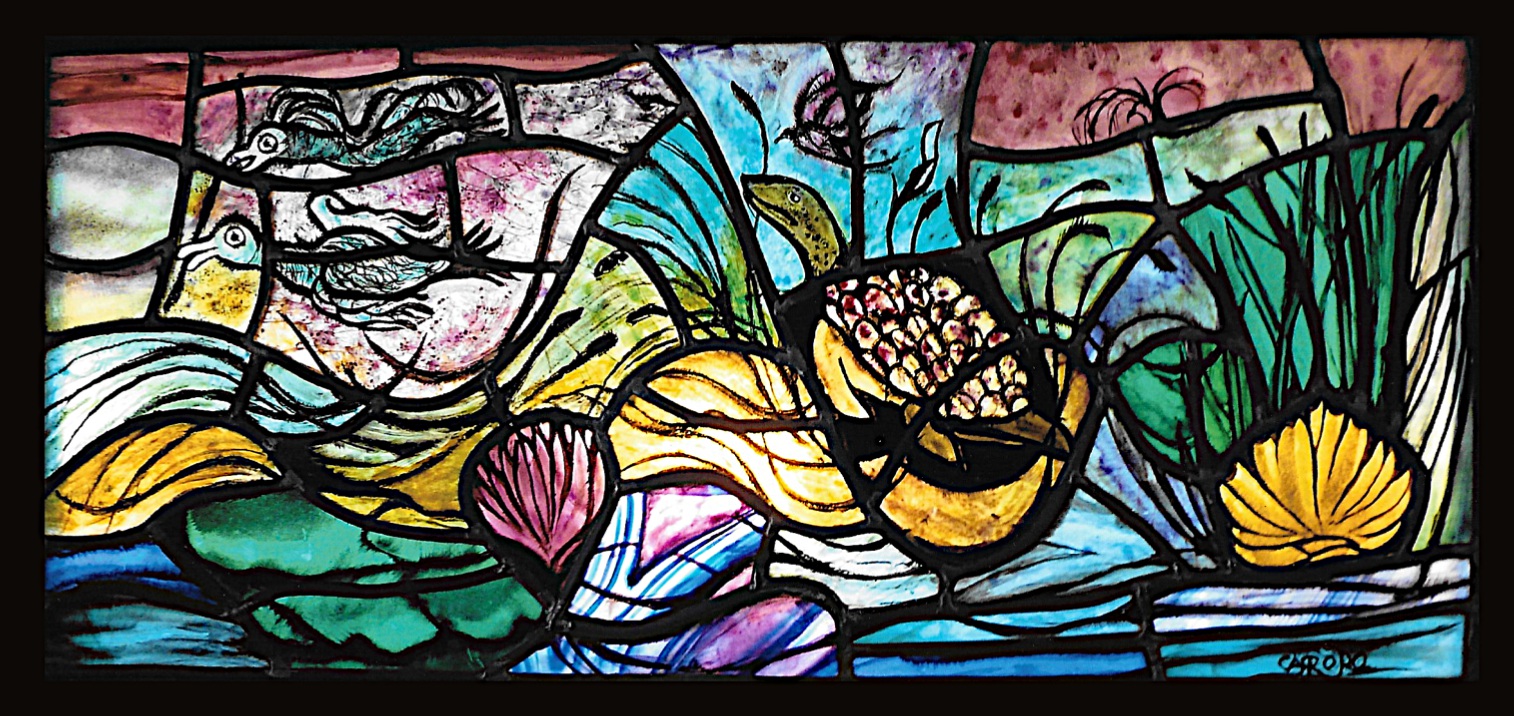
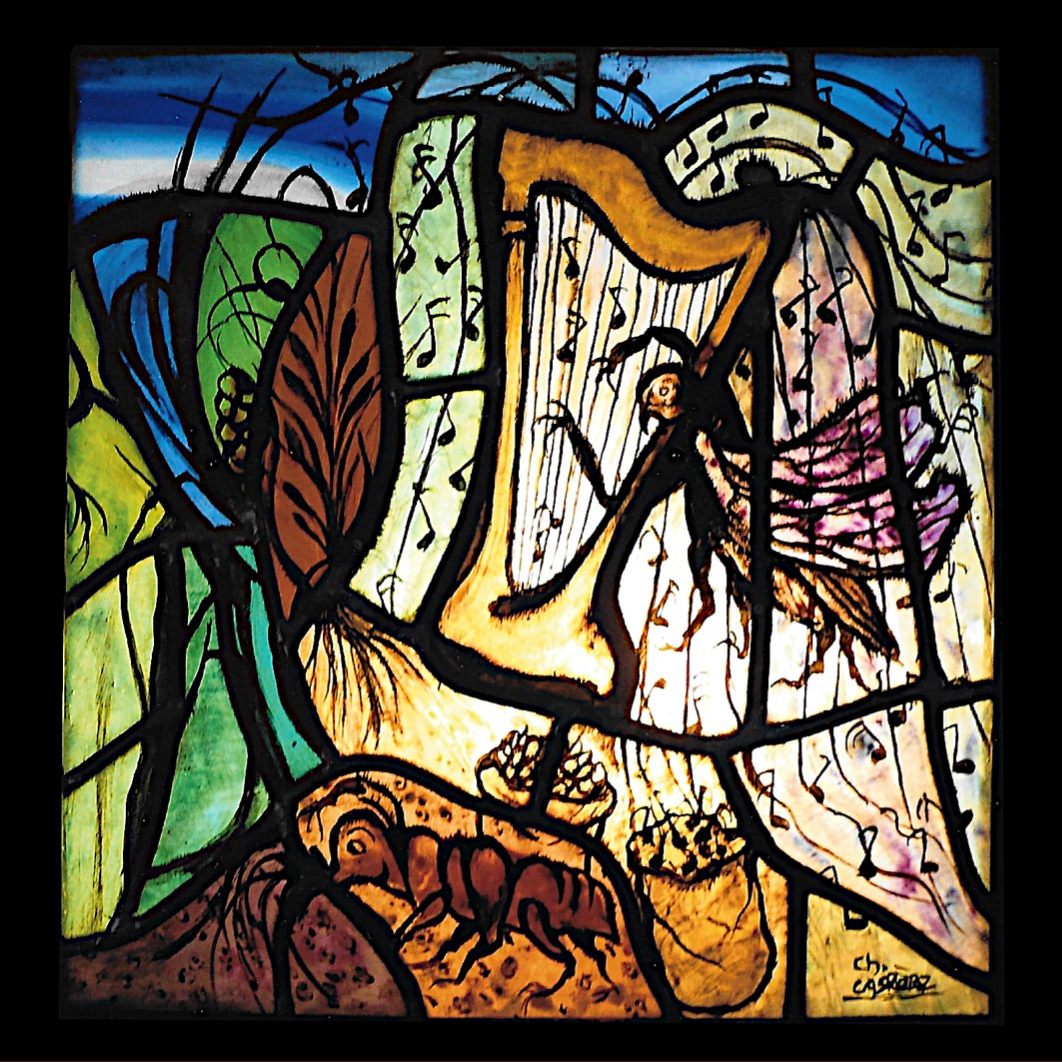
“The lion and the rat”: This fable proposes to meditate on the fact that we often need someone smaller than ourselves, as in this case the lion trapped in the net needs the rat to gnaw at it in order to free himself.
“The Turtle and the Two Ducks” informs us of the dangers of poor judgement and vanity.
As for “The Cicada and the Ant”, this fable makes us think about the evils of neglect.
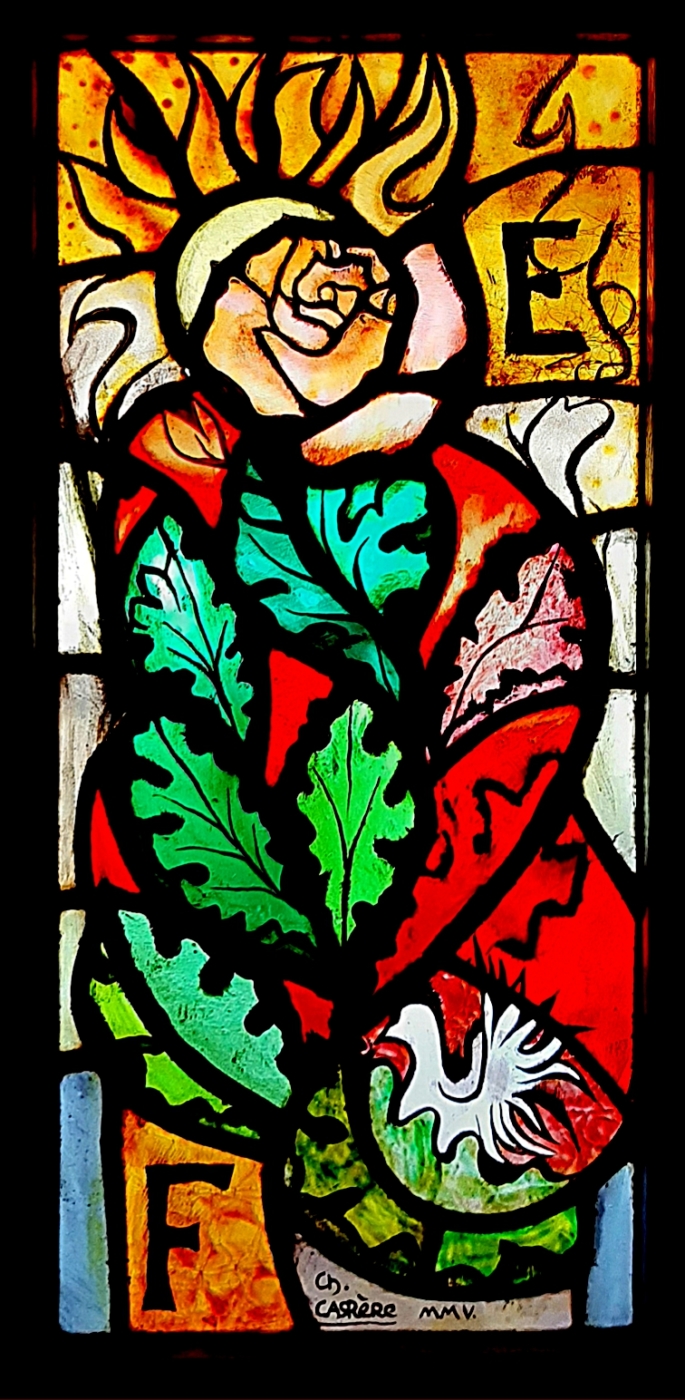
This is the window next to the front door of a house in the town of Urrugne.
This composition signed Charles Carrère incorporates the initials of the owner of the house.
The Master stained glass artist has added a tea rose as a symbol of benevolent beauty, with the sun in the background giving the rose the opportunity to grow.
As for the oak leaves, emblems of civic merit, they are placed on two hearts on which a dove, symbol of peace, has been placed.
The light that shines through this glass work can only be soothing in view of the coloured symbols it illuminates.
The Focus series offers regular articles with an analysis of a work. These focuses may concern stained glass windows, mosaics or drawings, paintings and collages of the artist.
Discover his religious works as a Master stained glass artist
Or return to the Master stained glass artist main page
This post is also available in: French

